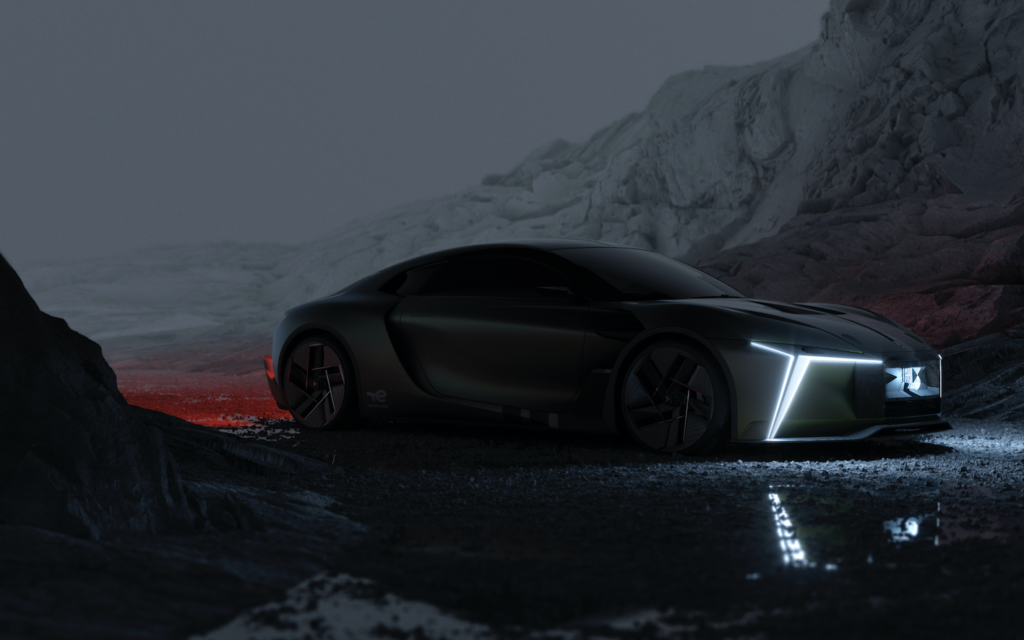
A new DS concept car? Yes, well, almost. Because obviously, the E-TENSE PERFORMANCE of 2022 is very closely derived from the E-TENSE of 2016. There are many reasons for this, as we will quickly see, and the result is still convincing.

-The choice of an existing concept to make the E-TENSE PERFORMANCE obviously reduces investment, especially by using the carbon cell from the expensive 2016 E-TENSE.
-The message of this concept is not primarily about design, but about technology, and what better way to express it than with this avant-garde coupe? DS is probably saving itself for a future concept car, this time focused on the formal language of post-2025 products…
-The 2016 E-TENSE paved the way towards all-electricity for the brand born in 2014. This 2.0 generation of the electric powertrain can therefore legitimately build on the 2016 prototype.

The two study drawings above clearly show the connection between the two concept cars. However, the entire front end of the 2022 concept has been treated in the same way as the design language that will be used in future production products, particularly in terms of the more prominent light signature.

From this point of view, we note that the two proposals retain the same proportions and formal language. A band with the DS Performance logo is illuminated between the lights, which retain the philosophy of the “scaled” lights seen in production. The 21-inch wheels of the 2022 concept have an aerodynamic profile thanks to new inserts.

It is from this angle that the differences between the two concept cars are most apparent. Indeed, the entire bow of the 2022 concept is modified. The bonnet, painted black as on the latest ASL concept car, is perforated by air extraction intakes. This concept, it should be remembered, is an ultimate performance laboratory and its design must therefore adapt to this.
The front grille has evolved from the “double wings” concept to a sort of window on which messages or lighting effects can be displayed. As for the new light signature, it borrows the cut-out that existed on the bumper of the 2016 concept, and stretches to the centre of the vehicle as the “double wings” did in 2016.

From the full rear view, the only aesthetic change is to the very generous aerodynamic diffuser. It is in line with the idea of the laboratory vehicle which made its first runs on Monday 7 February 2022. There is also a specific tint, as DS Automobiles explains: “In order to accompany the aerodynamic line, the trim has an interferential tint with a beetle effect. Depending on the external conditions and the angle of view, the perception of the colour changes and offers a striking contrast effect with glossy black surfaces stretching all the way to the bonnet. “

Obviously, the biggest difference between the two concepts is their respective powertrains. The 2016 DS E-TENSE was based on the Exagon Motors Furtive e-GT with 402 hp and a 0-100 km/h time of 4.5 seconds. Its DS E-TENSE PERFORMANCE descendant claims six years later to have twice the power (815 hp) and a 0 to 100 km/h time of just 2 seconds! It was designed in-house with the collaboration of TotalEnergies for the battery. With an unprecedented regeneration capacity of 600 kW, the DS E-TENSE PERFORMANCE powertrain promotes the best use of energy. While physically, DS E-TENSE PERFORMANCE retains a braking system with discs and pads, the regeneration system alone ensures braking in the vast majority of cases.

In the end, it is fair to say that the DS E-TENSE PERFORMANCE is an E-TENSE that has changed its heart for a more powerful package, and its front end to integrate the new formal language of future production DS. This concept will be tested from February 2022, with Jean-Éric Vergne, E-TENSE ambassador, and António Félix da Costa, both Formula E Champions. They will take turns at the wheel of the prototype to finalise its development, and will then begin testing on tracks and open roads. The real performance data of DS E-TENSE PERFORMANCE will then be revealed.
See our topic “DS E-TENSE PERFORMANCE versus the Porsche Mission R”. : http://lignesauto.fr/?p=24038


